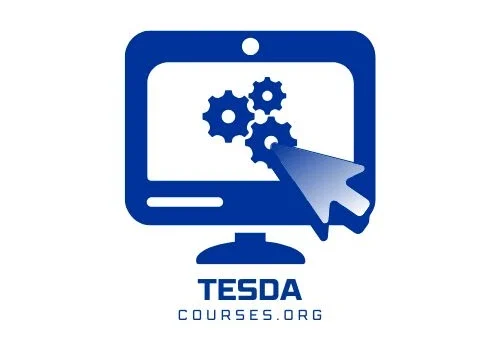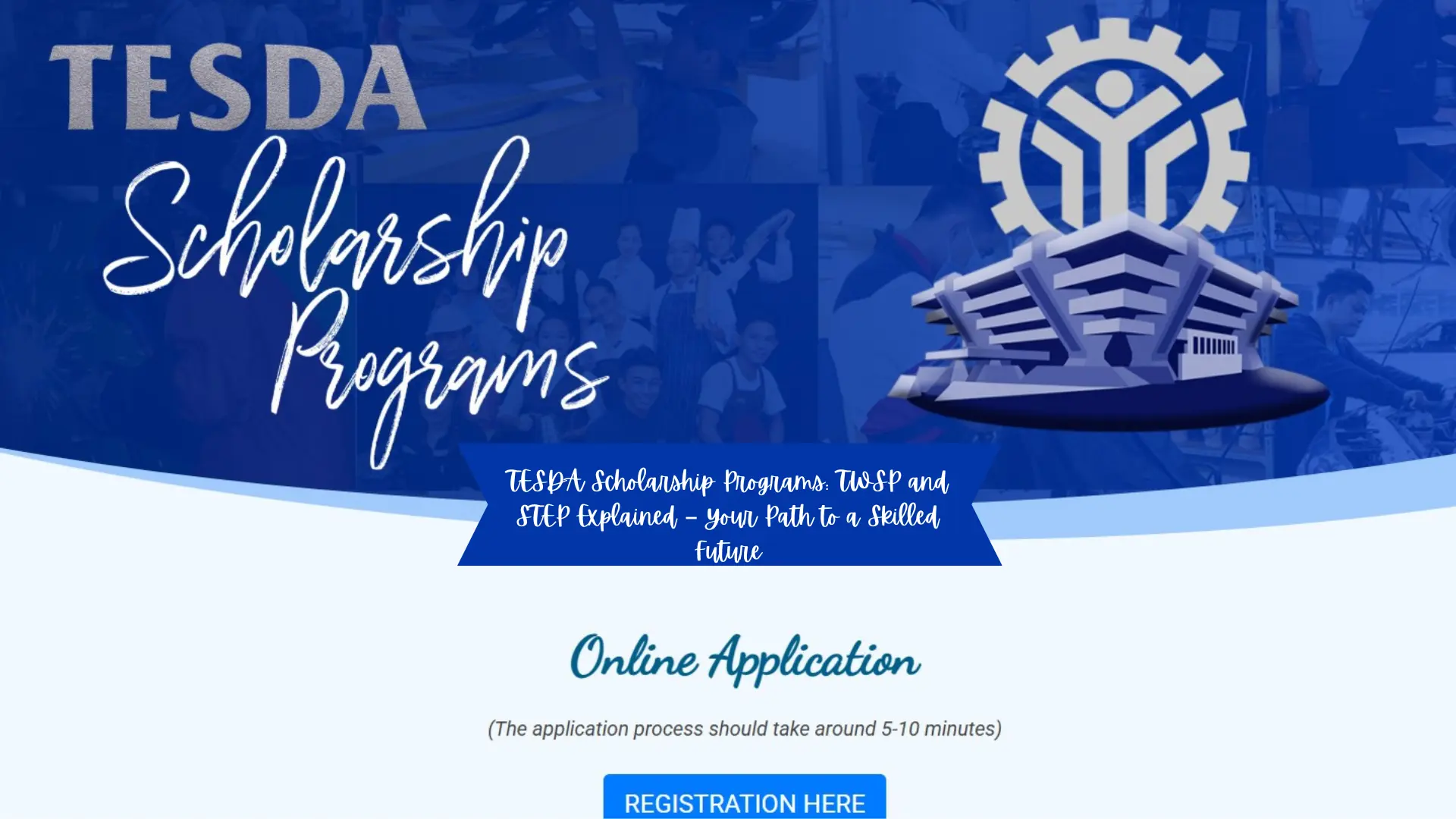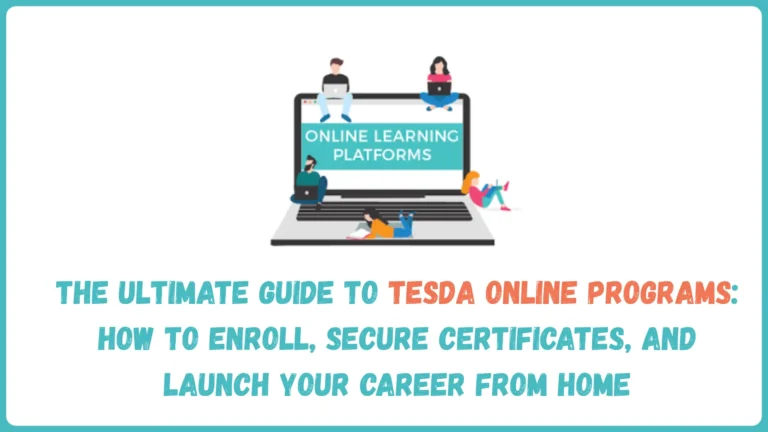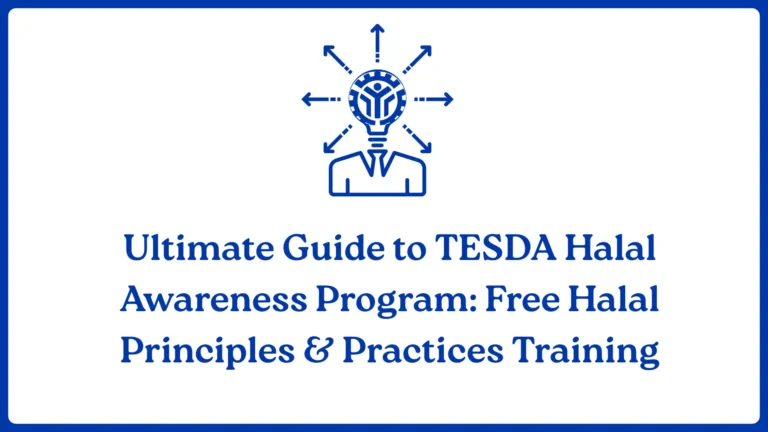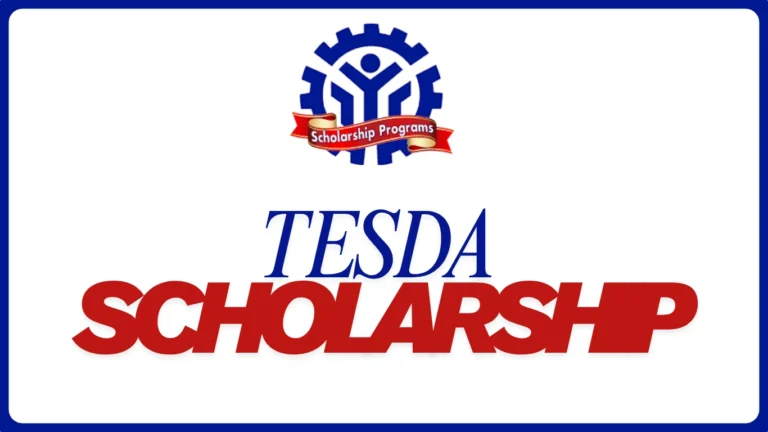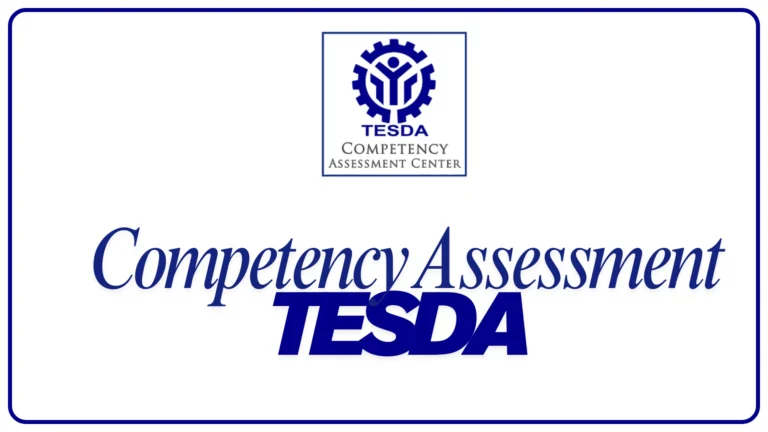TESDA Scholarship Programs 2025: Your Complete Guide to Free Skills Training
The Free Education You Didn’t Know Existed
Here’s something that frustrates me: Thousands of Filipinos and international students struggle to afford skills training, completely unaware that the Philippine government offers completely free technical-vocational education through TESDA scholarship programs.
I’m talking about zero tuition. Free materials. Free assessments. Sometimes even daily allowances. The whole package.
Yet people skip these opportunities because they think scholarships are:
- Too competitive to win
- Only for the ultra-poor
- Too complicated to apply for
- Reserved for locals only
Wrong on all counts.
TESDA scholarship programs are designed to be accessible, and with the right information and approach, your chances of getting approved are significantly higher than you think. I’ve watched countless students—from single mothers to career changers to international students—successfully secure these scholarships and transform their lives.
This isn’t theoretical advice from someone who Googled “TESDA scholarships” five minutes ago. This is practical guidance based on years of observing the system, talking to scholarship coordinators, and learning from thousands of successful applicants.
Whether you’re a Filipino citizen struggling with poverty, an OFW dependent seeking better opportunities, or an international student looking for affordable certification pathways, this guide will walk you through everything you need to know about TESDA scholarship programs in 2025.
Let’s turn that training cost barrier into a non-issue.
What Are TESDA Scholarship Programs?
The Basics You Need to Understand
TESDA scholarship programs are government-funded initiatives providing free technical-vocational training to qualified Filipinos (and in some cases, international students through specific programs).
What “Scholarship” Actually Means Here:
Unlike university scholarships that might cover partial tuition, TESDA scholarships typically cover:
✓ Full training fees (100% tuition)
✓ Training materials and supplies
✓ Assessment and certification fees
✓ Starter toolkits (for some programs)
✓ Daily training allowance (select programs and regions)
✓ Insurance (accident coverage during training)
Real Talk: When TESDA says “scholarship,” they mean it. You walk in with nothing but your documents, and you leave with certification and sometimes even tools to start working.
Why These Scholarships Exist
The Government’s Perspective:
The Philippine government invests billions annually in TESDA scholarships because:
- Economic development: Skilled workforce attracts foreign investment
- Poverty alleviation: Skills = employment = income = poverty reduction
- OFW competitiveness: Better training = higher overseas salaries = more remittances
- Unemployment reduction: Connecting workers with in-demand skills to actual jobs
Your Perspective:
These scholarships represent opportunity:
- Learn marketable skills without debt
- Gain nationally recognized certification
- Access employment networks
- Change your economic trajectory
Annual Budget Reality:
TESDA scholarship programs receive approximately ₱3-5 billion pesos annually. That’s real money training hundreds of thousands of Filipinos every year.

Complete List of TESDA Scholarship Programs 2025
Let me break down the TESDA scholarship list so you understand all your options.
1. Training for Work Scholarship Program (TWSP)
The Flagship Program—Your Best Bet
TWSP is the largest and most accessible TESDA scholarship. If you’re reading this guide, TWSP is probably your primary target.
Coverage:
- ✓ Full training costs
- ✓ Training materials
- ✓ Assessment fees
- ✓ Starter toolkits (welding equipment, computer tools, culinary kits, etc.)
- ✓ Training allowance: ₱60-₱100 daily (varies by region and program)
- ✓ Accident insurance during training
Target Beneficiaries (Priority Given To):
- Disadvantaged individuals:
- Families below poverty threshold
- Certificate of indigency holders
- Low-income households
- Displaced workers:
- Recently unemployed
- Underemployed
- Affected by business closures
- Vulnerable sectors:
- Out-of-school youth (15-30 years)
- Farmers and fisherfolk
- Persons with disabilities (PWDs)
- Indigenous peoples
- Solo parents
- Senior citizens (60+ years)
- Informal sector workers
- OFW dependents:
- Spouses of OFWs
- Children of OFWs
- Returning OFWs seeking reintegration
Boost Your Career with Free ILO Online Courses: Job Readiness and STEM Skills
Annual Allocation: Approximately ₱2.5-3.5 billion training 150,000-250,000 scholars annually
Available Courses: Virtually all TESDA courses qualify:
- Welding programs
- Automotive servicing
- Caregiving
- Computer servicing
- Electrical installation
- Plumbing
- Beauty care
- Culinary arts
- Construction trades
- Electronics
- Agricultural programs
- And 200+ more
Application Period:
- Year-round enrollment but batch schedules vary
- Peak application periods: January-March and June-August
- Apply 2-3 months before desired training start
Success Rate: Approximately 60-70% of complete, timely applications get approved (varies by region and funding availability)
2. Private Education Student Financial Assistance (PESFA)
For Students in Private TESDA-Accredited Schools
PESFA provides education vouchers for students who prefer private technical-vocational institutions over government training centers.
Coverage:
- Education voucher: ₱5,000-₱15,000 depending on course
- Applied directly to tuition at accredited private school
- One-time grant per student per course
Eligibility:
- Enrolled or planning to enroll in TESDA-accredited private TVI (Technical-Vocational Institution)
- Priority courses (usually high-demand skills)
- Financial need demonstrated
- Maintaining satisfactory academic progress
Why Choose PESFA:
- More flexible schedules (evening classes, weekends)
- Sometimes faster completion
- Smaller class sizes
- More locations to choose from
Application: Through Commission on Higher Education (CHED) in coordination with TESDA
Annual Budget: Approximately ₱300-500 million serving 30,000-50,000 students
3. Special Training for Employment Program (STEP)
Targeting the Most Disadvantaged
STEP focuses on providing training plus livelihood support to the most vulnerable populations.
Coverage:
- Full training costs
- Training materials
- Assessment and certification
- Livelihood starter kits (tools, equipment, or capital for micro-enterprise)
- Post-training monitoring and support
Priority Beneficiaries:
- Out-of-school youth (OSY) aged 15-30
- Persons with disabilities
- Indigenous peoples
- Displaced workers from closed industries
- Solo parents
- Informal sector workers
Special Features:
- Includes entrepreneurship training
- Business planning assistance
- Microfinance connections
- Cooperative formation support
- Job placement more intensive
Livelihood Support: After completing training and certification, STEP scholars receive starter packages:
- Welders: Basic welding equipment (₱8,000-₱15,000 value)
- Bakers: Oven and basic baking tools (₱10,000-₱20,000 value)
- Beauticians: Basic equipment kit (₱5,000-₱12,000 value)
- Farmers: Seeds, tools, or small livestock (₱8,000-₱20,000 value)
Application: Through TESDA provincial/regional offices, often coordinated with local government units (LGUs)
Annual Reach: Approximately 50,000-80,000 beneficiaries annually
4. TESDA Scholarship for OFWs and Dependents
Supporting Overseas Filipino Workers and Their Families
Special programs designed for OFW sector with unique needs and schedules.
Coverage:
- Full training costs
- Flexible schedules accommodating OFW return periods
- Expedited processing
- Priority job placement (local and overseas)
Eligibility Categories:
A. Returning OFWs:
- Completed overseas contract
- Seeking reintegration to Philippine workforce
- Want to start business using overseas savings
- Need skills upgrading or certification
B. OFW Dependents:
- Spouse of active OFW
- Children of OFWs (18+ years)
- Parents dependent on OFW support
C. Displaced OFWs:
- Affected by overseas employment issues
- Medical repatriation
- Early termination cases
Popular Programs:
- Entrepreneurship and business management
- Advanced technical skills (welding, automotive)
- Healthcare courses (for those eyeing international deployment)
- Agricultural production (for those investing in farms)
- Food processing and manufacturing
Application:
- TESDA regional offices
- OWWA (Overseas Workers Welfare Administration) coordination
- Philippine Overseas Labor Office (POLO) for those overseas
TESDA Courses for Abroad: The Ultimate Guide to In-Demand NC II & NC III Certifications
5. TESDA Online Scholarship Programs
Learn Anywhere, Anytime
While most TESDA scholarship courses require physical attendance, certain online programs offer free certification pathways.
Coverage:
- Free access to all online courses
- Digital certificates upon completion
- Self-paced learning
- No geographical restrictions
Available Online Courses:
- Bookkeeping NC III
- Entrepreneurship
- Organic agriculture production
- Handicraft making
- 2D Animation NC III
- Contact center services
- Food processing
- Various short courses
Eligibility:
- Open to all
- Requires stable internet connection
- Computer/smartphone with internet access
Limitation: For NC certifications, physical assessment still required at TESDA center (fees may apply unless covered by other scholarship programs)
6. Industry-Partnered Scholarship Programs
Companies Investing in Their Future Workforce
How It Works: Private companies partner with TESDA, sponsoring training costs in exchange for trained workers.
Typical Arrangement:
- Company covers: Full training + allowance
- Student commits: 1-2 years employment post-certification
- Salary: Market rate (not reduced for training costs)
Major Industry Partners:
- Manufacturing companies (Freeport Area of Bataan, Cavite Economic Zones)
- Shipbuilding firms
- BPO companies
- Hotel and resort chains
- Construction firms
- Automotive dealerships
- Electronics assembly plants
Benefits:
- Guaranteed employment immediately after certification
- Often higher starting salaries
- Career progression within company
- Sometimes includes accommodation during training
Finding These Opportunities:
- TESDA job fairs
- Company HR departments
- TESDA provincial office job placement divisions
- Facebook groups (TESDA Training and Jobs Philippines, etc.)
7. Tulong Trabaho Act Scholarship Programs
Recent Legislation Expanding Access
Republic Act 11230 (Tulong Trabaho Act) expanded scholarship coverage and benefits.
Key Features:
- Broader eligibility
- Higher training allowances
- Extended post-training support
- Guaranteed job placement assistance
- Enterprise development support
Target: Unemployed and underemployed Filipinos seeking skills training and sustainable employment
Application: Through TESDA in coordination with Department of Labor and Employment (DOLE)
| Program | Coverage | Target Group | Annual Slots | Special Benefits |
|---|---|---|---|---|
| TWSP | Full + toolkit | General public, priority to disadvantaged | 150,000-250,000 | Daily allowance |
| PESFA | Voucher ₱5k-15k | Private school enrollees | 30,000-50,000 | Flexible institutions |
| STEP | Full + livelihood kit | Most vulnerable sectors | 50,000-80,000 | Starter business kits |
| OFW Programs | Full + flexible schedule | OFWs and dependents | 20,000-40,000 | Reintegration support |
| Industry-Partnered | Full + allowance | Job-ready candidates | 10,000-30,000 | Guaranteed employment |
The Ultimate Guide to TESDA Training Centers, Courses, and Contact Information Nationwide
TESDA Scholarship Requirements: What You Actually Need
Let’s talk about TESDA scholarship requirements. The official lists can seem intimidating, but here’s the real breakdown:
Universal Requirements (All Scholarship Programs)
1. Personal Identification:
- ✓ PSA Birth Certificate (not the old NSO version)
- Must be authenticated
- Cost: ₱155 at PSA offices or ₱365 via courier
- Processing: 3-7 days
- ✓ Valid Government ID
- Driver’s license, passport, postal ID, voter’s ID, or PhilID
- School ID acceptable if currently studying elsewhere
- Must be unexpired and clearly readable
- ✓ Recent ID Photos
- 2×2 size
- White background
- Within 6 months
- Bring 8-10 copies (you’ll need extras)
2. Educational Credentials:
- ✓ High School Diploma or equivalent
- Form 138 (Report Card) or Transcript of Records
- Alternative: ALS (Alternative Learning System) completion certificate
- Note: Some courses accept Grade 10 completion
- International students: Apostilled/authenticated foreign credentials
3. Financial Documents (For Need-Based Scholarships):
- ✓ Certificate of Indigency
- Issued by barangay
- States family is below poverty threshold
- Free from barangay office
- Valid for 6 months typically
- ✓ Voter’s Certification or Income Tax Return
- Proves residency
- For TWSP and STEP applications
- From parent/guardian if you’re dependent
4. Application Forms:
- ✓ TESDA Scholarship Application Form
- Available at TESDA offices
- Downloadable from TESDA website
- Fill out completely and accurately
- Get it notarized (some programs require this)
Additional Requirements by Program Type
For TWSP (Training for Work Scholarship Program):
- Barangay clearance
- Certificate of good moral character (for some courses)
- Medical certificate (for healthcare and technical courses)
- Drug test results (occasionally required)
For STEP (Special Training for Employment Program):
- Proof of OSY status (out-of-school youth certification)
- Or PWD ID
- Or IP (Indigenous Peoples) certification
- Or solo parent ID
- Documentary proof of special circumstance
For OFW Scholarship Programs:
- OFW ID or OWWA membership
- Proof of relationship to OFW (for dependents)
- Passport copy
- Employment contract (for returning OFWs)
For Industry-Partnered Scholarships:
- Resume/CV
- May require initial interview
- Skills assessment (sometimes)
- Employment application to partnering company
For International Students:
- Valid passport
- Student visa or appropriate visa classification
- Proof of Philippine residence
- Authenticated educational credentials from home country
- Note: Most Filipino citizen-only scholarships exclude international students, but industry-partnered and some private scholarships may be accessible
Documents Checklist Template
Print this checklist when preparing your application:
Universal (Everyone):
- [ ] PSA Birth Certificate (3 photocopies)
- [ ] Valid Government ID (3 photocopies)
- [ ] 2×2 ID Photos (10 copies)
- [ ] High School Diploma/Form 138 (3 photocopies)
- [ ] TESDA Application Form (completely filled out)
For Need-Based (TWSP, STEP):
- [ ] Certificate of Indigency
- [ ] Voter’s Certification or ITR of parents/guardians
- [ ] Barangay Clearance
For Specific Groups:
- [ ] OFW ID (if applicable)
- [ ] PWD ID (if applicable)
- [ ] Solo Parent ID (if applicable)
- [ ] IP Certification (if applicable)
Course-Specific:
- [ ] Medical Certificate (healthcare/technical courses)
- [ ] NBI Clearance (some programs)
- [ ] Drug Test (occasionally)
Pro Tip: Always bring original documents plus 3 photocopies of everything. Some offices accept photocopies, others want originals to verify, then return them. Better to have extras than to make multiple trips.
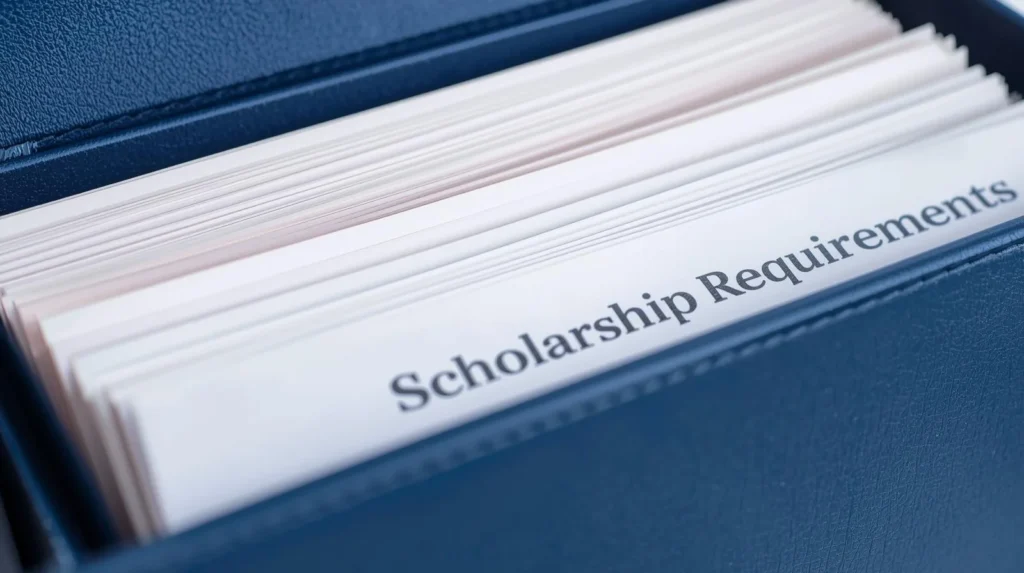
TESDA Scholarship Application Process: Step-by-Step
The TESDA scholarship application process seems bureaucratic, but it’s actually straightforward once you understand the flow. Let me walk you through it chronologically.
Phase 1: Pre-Application (8-12 Weeks Before Desired Start Date)
Week 1-2: Research and Planning
Step 1: Choose Your Course
- Browse TESDA scholarship courses list
- Consider employment demand in your area
- Research salary potential
- Assess your interest and aptitude
- Have 2-3 backup course options
Step 2: Identify Applicable Scholarships
- Review all TESDA scholarship programs
- Determine which ones you qualify for
- Can apply to multiple programs (increase chances)
- Prioritize based on coverage and benefits
Step 3: Contact TESDA Office
- Visit or call nearest TESDA provincial/regional office
- Inquire about:
- Next batch schedules for your chosen course
- Current scholarship availability
- Specific requirements for that location
- Application deadlines
- Processing timeline
Week 3-4: Document Gathering
Step 4: Collect All Requirements
- Request PSA birth certificate immediately (takes longest)
- Get medical certificate if needed
- Visit barangay for certificates
- Take ID photos
- Gather educational documents
- Make photocopies (3 sets of everything)
Pro Tip: Start with the slowest documents first (PSA certificates), not the easiest ones.
Step 5: Prepare Application Forms
- Download forms from TESDA website or get at office
- Fill out completely in clear handwriting or type
- Double-check all information for accuracy
- Have someone proofread for errors
- Get notarized if required
Phase 2: Submission (6-8 Weeks Before Start Date)
Week 5-6: Application Submission
Step 6: Submit Complete Application
In-Person Submission (Recommended):
- Visit TESDA office during office hours (usually 8 AM – 5 PM, Mon-Fri)
- Bring complete requirements folder
- Submit to scholarship coordinator
- Get acknowledgment receipt with reference number
- Ask for timeline of next steps
- Get contact information for follow-up
Online Submission (If Available):
- Some regions now accept TESDA scholarship online application
- Visit TESDA e-services portal
- Create account or log in
- Upload scanned documents (clear, readable)
- Submit application
- Note reference number
- Check email for confirmation
What Happens Next:
- Application reviewed for completeness
- Initial screening for eligibility
- Documents verified
- Background check (for some programs)
- Processing time: 2-4 weeks typically
Step 7: Follow Up
- Call or visit TESDA office after 1-2 weeks
- Check application status
- Provide any additional requirements if requested
- Be polite but persistent
Phase 3: Evaluation and Approval (4-6 Weeks Before Start)
Week 7-8: Assessment and Interview
Step 8: Attend Interview/Orientation
For competitive programs or limited slots, you may have:
Interview:
- Why you want this training
- Your career goals
- Financial situation
- Commitment to complete program
Assessment:
- Basic skills test (sometimes)
- Aptitude evaluation
- Not about passing/failing, but determining readiness
Orientation:
- Scholarship obligations
- Training schedule
- Conduct expectations
- Documentation requirements
Step 9: Approval Notification
If Approved:
- Receive approval letter or notification
- Scholarship agreement to sign
- Training schedule provided
- Orientation date announced
- Congratulations!
If Waitlisted:
- Don’t lose hope
- Many waitlisted applicants get in
- Stay in contact
- Reapply if necessary
If Denied:
- Ask for specific reasons
- Address those issues
- Reapply next batch
- Try different scholarship program
- Consider alternative courses with more availability
Phase 4: Pre-Training (2-4 Weeks Before Start)
Week 9-10: Final Preparations
Step 10: Complete Pre-Training Requirements
- Sign scholarship agreement
- Acknowledge training obligations
- Provide additional information if needed
- Confirm attendance for orientation
Step 11: Prepare for Training
- Buy uniforms if required (usually provided)
- Get safety gear (often provided, but check)
- Arrange accommodation if relocating
- Plan transportation
- Clear schedule for training duration
- Attend mandatory orientation
Phase 5: Training Begins!
Week 11+: Start Your Training
- First day orientation
- Meet instructors and classmates
- Receive training materials
- Begin learning journey
- Maintain attendance (critical for scholarship retention)
Important Notes Throughout the Process
Application Timeline Reality:
- Early applications: Better chances, more slots available
- Peak periods: More competitive but more funding allocated
- Last-minute: Possible but riskier
Best Application Windows:
- January-March: Post-holiday, new budget year
- June-August: Mid-year batch, coincides with school calendar
Common Mistakes to Avoid:
- Incomplete documents: Most common rejection reason
- Inaccurate information: Double-check everything
- Missing deadlines: Set phone reminders
- Not following up: Silent applications get lost
- Giving up too easily: Rejection isn’t permanent
TESDA Scholarship Application Tips: Insider Strategies
After analyzing hundreds of successful applications, here are strategies that actually increase your chances:
Before You Apply
1. Apply to Multiple Scholarship Programs Simultaneously
Don’t put all eggs in one basket:
- Submit to TWSP
- Apply for PESFA if considering private schools
- Check industry-partnered opportunities
- Look into special programs (OFW, PWD, IP if applicable)
Why: Approval rates vary. More applications = higher probability.
2. Choose Courses Strategically
High Approval Rate Courses:
- High-demand skills (welding, caregiving, automotive)
- Government priority programs
- Courses with industry partnerships
- Programs with high employment rates
Lower Approval Rate:
- Saturated fields
- Courses with limited industry demand
- Very specialized programs with few slots
Smart Strategy: Apply for high-demand course that interests you. Have backup course ready if first choice fills up.
3. Time Your Application Perfectly
Best Times:
- First week of application opening: Maximum slots available
- 2-3 months before batch start: Adequate processing time
- January: New budget year, fresh funding
- June: Mid-year batches starting
Worst Times:
- Last week before deadline (rushed processing, fewer slots)
- December (holiday slowdown)
- Right after major calamities (resources diverted)
During Application
4. Make Your Application Stand Out
Personal Statement Tips:
- Be genuine and specific
- Explain your financial need clearly
- Articulate career goals
- Show commitment and motivation
- Mention family circumstances honestly
- Highlight how scholarship will change your life
Example Weak Statement: “I want TESDA scholarship because I need training and don’t have money.”
Example Strong Statement: “As a solo parent of two children working as a store clerk earning ₱10,000 monthly, I struggle to provide for my family. Receiving TESDA caregiving scholarship would enable me to pursue overseas employment, earning enough to send my children to college and provide them opportunities I never had. I am committed to completing the program and using these skills to create a better future for my family.”
5. Present Documents Professionally
Organization matters:
- Use document folders or envelopes
- Arrange documents in order (follow checklist)
- Label everything clearly
- Clear, readable photocopies
- Original documents readily accessible
Interview/Submission Day:
- Dress appropriately (business casual minimum)
- Arrive early
- Bring extra copies of everything
- Be polite to all staff
- Show enthusiasm and respect
6. Build Relationships
TESDA Staff Are Your Allies:
- Learn names of coordinators
- Thank them for their time
- Ask intelligent questions
- Follow their advice
- Keep them updated on your status
Why: When decisions are close, personal connection can tip scales. Staff remember polite, prepared applicants positively.
After Submission
7. Follow Up Strategically
Follow-Up Schedule:
- Week 1-2 after submission: Initial courtesy call
- Week 3: Check processing status
- Week 4: Confirm if additional requirements needed
- Week 5+: Check approval status
How to Follow Up:
- Call during non-busy hours (10-11 AM or 2-3 PM)
- Be polite, not demanding
- Have reference number ready
- Ask specific questions
- Thank them for their time
8. Have Backup Plans
If Waitlisted or Denied:
- Plan A: Reapply next batch with stronger application
- Plan B: Apply to different scholarship program
- Plan C: Choose different course with more availability
- Plan D: Self-fund if possible, small personal loan
- Plan E: Work while saving, apply later
Don’t Give Up: Many successful scholars were initially rejected but persisted.
Special Strategies for Competitive Situations
9. Leverage Priority Status
If you qualify for priority categories, emphasize it:
- Certificate of indigency (poverty status)
- PWD ID (disability)
- Solo parent ID
- IP certification (indigenous peoples)
- OFW dependent status
- Displaced worker documentation
Present these prominently in your application.
10. Get Recommendations
While not always required, letters of recommendation can strengthen applications:
- Barangay captain
- Previous employers
- Community leaders
- Church leaders
- School principals/teachers
Keep them brief (1 page), focused on:
- Your character
- Financial need
- Commitment to improvement
- Community standing
TESDA Scholarship Coverage: What’s Actually Included?
Let’s talk specifics about TESDA scholarship benefits and TESDA scholarship coverage. Understanding exactly what’s included helps you budget correctly.
What’s Typically Covered (TWSP Standard)
1. Training Fees
- ✓ Full tuition: 100% of training costs
- ✓ Registration fees: All administrative costs
- ✓ Laboratory fees: Hands-on practice sessions
Value: ₱8,000-₱25,000 depending on course
2. Training Materials
- ✓ Textbooks and modules
- ✓ Workbooks and practice materials
- ✓ Safety equipment (helmets, gloves, goggles, etc.)
- ✓ Uniforms (some programs)
- ✓ Consumables (welding rods, cooking ingredients, beauty products, etc.)
Value: ₱2,000-₱8,000
3. Assessment and Certification
- ✓ Competency assessment fees
- ✓ National Certificate processing
- ✓ Certificate issuance
Value: ₱500-₱2,500
4. Starter Toolkits (Program-Dependent)
Examples:
Welding:
- Basic welding helmet
- Welding gloves
- Chipping hammer
- Wire brush
- Safety equipment Value: ₱8,000-₱15,000
Computer Servicing:
- Basic tool kit
- Screwdrivers and pliers
- Diagnostic software
- Carrying case Value: ₱3,000-₱8,000
Culinary:
- Knife set
- Cutting board
- Basic utensils
- Chef uniform Value: ₱5,000-₱12,000
Beauty Care:
- Basic equipment set
- Combs, scissors, tools
- Practice materials
- Carrying case Value: ₱4,000-₱10,000
5. Training Allowance (Region and Program Dependent)
Daily Allowance:
- ₱60-₱100 per training day
- Covers transportation and meal costs
- Not all programs provide this
- Not all regions have same rates
Example Calculation:
- 6-month training = 120 training days
- ₱80/day allowance
- Total allowance: ₱9,600
6. Insurance Coverage
- Accident insurance during training
- Medical expenses if injured in training
- Disability coverage (rare incidents)
What’s NOT Covered (Plan for These Costs)
Personal Expenses:
- ✗ Accommodation (if relocating)
- ✗ Meals beyond allowance
- ✗ Personal transportation (beyond allowance)
- ✗ Personal items and toiletries
- ✗ Entertainment and leisure
- ✗ Family support while training
Additional Training Materials:
- ✗ Extra practice materials (if you want additional)
- ✗ Supplementary books
- ✗ Advanced equipment beyond basics
- ✗ Personal tools you prefer
Opportunity Costs:
- ✗ Lost income if you quit job for training
- ✗ Childcare (except some STEP programs)
- ✗ Family financial support during training period
Realistic Budget (Even with Full Scholarship)
6-Month Training with TWSP Scholarship:
Covered by Scholarship:
- Training: ₱15,000
- Materials: ₱5,000
- Assessment: ₱1,500
- Toolkit: ₱10,000
- Allowance: ₱9,600 Total Scholarship Value: ₱41,100
Your Personal Costs:
| Expense | Monthly | 6 Months |
|---|---|---|
| Accommodation (shared) | ₱3,000 | ₱18,000 |
| Food (beyond allowance) | ₱4,000 | ₱24,000 |
| Transportation (extra) | ₱1,000 | ₱6,000 |
| Personal items | ₱800 | ₱4,800 |
| Emergency fund | – | ₱5,000 |
| TOTAL PERSONAL | ₱8,800 | ₱57,800 |
Bottom Line: Even with full scholarship, budget ₱50,000-₱60,000 for 6-month training program to cover living expenses.
Money-Saving Strategies:
- Live with relatives (saves ₱18,000)
- Cook your own meals (saves ₱10,000-₱15,000)
- Bike instead of commute (saves ₱6,000)
- Share accommodation with classmates (saves ₱9,000)
Minimum Realistic Budget: ₱25,000-₱35,000 if you’re extremely frugal and have local family support.
TESDA Scholarship Courses: Best Programs to Apply For
Not all TESDA scholarship courses have equal demand, employment rates, or approval probabilities. Let me break down the strategic choices:
Tier 1: High-Demand, High-Approval Courses
These courses typically have:
- More scholarship slots allocated
- Higher approval rates
- Strong employment prospects
- Good starting salaries
1. Welding NC II
- Approval Rate: 70-80%
- Employment Rate: 90-95% within 6 months
- Starting Salary: ₱18,000-₱28,000 (local), USD 2,000-5,000 (overseas)
- Why Popular: Global demand, high pay, clear career path
- Scholarship Coverage: Usually includes toolkit worth ₱10,000-₱15,000
2. Caregiving NC II
- Approval Rate: 75-85%
- Employment Rate: 85-90%
- Starting Salary: ₱15,000-₱22,000 (local), USD 1,500-3,000 (overseas)
- Why Popular: International pathway (Canada, UK, Australia), aging population globally
- Special Benefit: Often prioritized for scholarships due to global demand
3. Automotive Servicing NC II
- Approval Rate: 65-75%
- Employment Rate: 80-85%
- Starting Salary: ₱16,000-₱26,000
- Why Popular: Cars aren’t going anywhere, entrepreneurship potential
- Toolkit: Basic automotive tools (₱8,000-₱12,000 value)
4. Computer Systems Servicing NC II
- Approval Rate: 70-80%
- Employment Rate: 75-80%
- Starting Salary: ₱15,000-₱25,000
- Why Popular: Tech skills, location-independent potential, entrepreneurship
- Toolkit: Basic computer tools and diagnostic software
5. Electrical Installation and Maintenance NC II
- Approval Rate: 65-75%
- Employment Rate: 85-90%
- Starting Salary: ₱18,000-₱30,000
- Why Popular: Construction boom, renewable energy growth, consistent demand
- Toolkit: Basic electrical tools
Tier 2: Moderate Demand, Good Prospects
6. Commercial Cooking NC II
- Approval Rate: 60-70%
- Employment Rate: 70-75%
- Starting Salary: ₱14,000-₱22,000
- Entrepreneurship: High potential (catering, restaurant)
- Toolkit: Basic kitchen tools and knife set
7. Bread and Pastry Production NC II
- Approval Rate: 65-75%
- Employment Rate: 70-80%
- Starting Salary: ₱14,000-₱20,000
- Entrepreneurship: Bakery business (₱40,000-₱150,000 monthly potential)
- Toolkit: Basic baking equipment
8. Plumbing NC II
- Approval Rate: 60-70%
- Employment Rate: 80-85%
- Starting Salary: ₱18,000-₱28,000
- Why Good: Construction demand, entrepreneurship, overseas opportunities
9. Beauty Care NC II
- Approval Rate: 65-75%
- Employment Rate: 70-75%
- Starting Salary: ₱12,000-₱20,000 + tips/commission
- Entrepreneurship: Salon business highly viable
- Toolkit: Basic beauty care equipment
10. Masonry NC II
- Approval Rate: 55-65%
- Employment Rate: 75-80%
- Starting Salary: ₱16,000-₱26,000
- Why Good: Construction projects nationwide, overseas demand
Tier 3: Specialized, Competitive Programs
11. Electronics Products Assembly and Servicing
- Approval Rate: 50-60%
- Employment Rate: 80-85%
- Starting Salary: ₱18,000-₱28,000
- Why Competitive: Specific industry demand, requires aptitude
12. Heavy Equipment Operation NC II
- Approval Rate: 45-55%
- Employment Rate: 85-90%
- Starting Salary: ₱20,000-₱35,000
- Why Competitive: Limited training facilities, expensive equipment
13. Driving NC II (Professional Driving)
- Approval Rate: 50-60%
- Employment Rate: 70-75%
- Starting Salary: ₱15,000-₱25,000
- Why Moderate: Growing delivery/transport sector
Strategic Course Selection Guide
Choose Based on:
1. Your Physical Capabilities
- Welding, construction trades: Physically demanding, hot environments
- Computer servicing, beauty care: Less physically taxing
- Caregiving: Moderate physical demands, emotional intelligence needed
2. Your Career Timeline
- Quick income need: Welding, automotive, electrical (high immediate demand)
- International pathway: Caregiving (Canada, UK route)
- Entrepreneurship: Culinary, beauty care, plumbing (lower capital startup)
3. Your Learning Style
- Hands-on learner: Technical trades (welding, automotive, construction)
- People-oriented: Caregiving, beauty care, hospitality
- Tech-inclined: Computer servicing, electronics
4. Your Location
- Urban areas: More demand for IT, beauty care, hospitality
- Industrial zones: Welding, automotive, electrical
- Coastal areas: Maritime trades, aquaculture
- Rural areas: Agricultural programs, construction trades
5. Scholarship Approval Probability
- Need high approval odds: Stick to Tier 1 courses
- Can risk competition: Try Tier 2-3 with Tier 1 backup
Application Strategy:
- First Choice: High-interest Tier 1 course
- Second Choice: Alternative Tier 1 course
- Third Choice: Tier 2 course with good prospects
TESDA Scholarship Deadlines 2025: Don’t Miss These Dates
Understanding TESDA scholarship deadline patterns helps you plan applications strategically.
How TESDA Scholarship Deadlines Actually Work
Important Reality Check:
Unlike university admissions with fixed deadlines, TESDA operates on rolling/batch-based enrollment:
- Training centers schedule courses in batches
- Each batch has its own enrollment period
- Scholarships allocated per batch
- First come, first served within each batch
Translation: “Deadlines” are more like “enrollment windows” that vary by location and course.
2025 Scholarship Application Timeline
Quarter 1 (January-March):
Prime Application Period
Why Best:
- New fiscal year = fresh scholarship budget
- High funding availability
- More slots allocated
- Post-holiday enrollment push
Typical Windows:
- Applications: January 15 – March 15
- Processing: 2-4 weeks
- Training Starts: March-April
Best For:
- TWSP scholarships
- STEP programs
- General courses
Quarter 2 (April-June):
Second Wave Enrollments
Why Good:
- Mid-year budget allocation
- Summer training batches
- Graduating high school students target this
- Moderate competition
Typical Windows:
- Applications: April 1 – June 30
- Processing: 2-4 weeks
- Training Starts: June-July
Best For:
- Fresh graduates
- Career changers
- Mid-year batches
Quarter 3 (July-September):
Post-Summer Enrollment
Competition Level: Moderate to High
Typical Windows:
- Applications: July 15 – September 15
- Processing: 2-4 weeks
- Training Starts: September-October
Best For:
- Evening/weekend programs
- Working students
- Specific specialized courses
Quarter 4 (October-December):
Year-End Enrollments
Caution: Funding may be depleted
Typical Windows:
- Applications: October 1 – November 30 (limited)
- Processing: 2-4 weeks
- Training Starts: December-January
Reality Check: December applications often pushed to January processing due to holidays
Regional Variations
Important: Exact dates vary by TESDA regional/provincial office.
How to Get Specific Deadlines:
Method 1: Direct Contact
- Call TESDA provincial office
- Ask: “When is next enrollment for [specific course]?”
- Request scholarship application deadline
- Get batch start date
Method 2: Website Check
- Visit TESDA official website (tesda.gov.ph)
- Check regional office pages
- Look for enrollment announcements
- Download schedules if available
Method 3: Social Media
- Follow TESDA official Facebook pages
- Regional/provincial office pages
- Announcements posted regularly
- Direct message for inquiries
Method 4: In-Person Visit
- Visit TESDA office directly
- Get printed schedule
- Ask about upcoming batches
- Submit application on the spot
Critical Deadline Strategies
1. Apply 2-3 Months Before Desired Start Date
Why: Processing takes 2-4 weeks, plus time for approval and preparations.
Example:
- Want to start training in June
- Apply in March-April
- Get approved by May
- Prepare in May-June
- Start training June
2. Monitor Multiple Courses
Different courses have different schedules:
- Welding: Often quarterly batches
- Caregiving: Monthly in high-demand areas
- Specialized courses: Semi-annually
Track deadlines for 2-3 courses simultaneously.
3. Set Personal Reminders
Application Reminder Schedule:
- 3 months before: Research and prepare documents
- 2 months before: Submit application
- 6 weeks before: Follow up on status
- 4 weeks before: Confirm approval
- 2 weeks before: Final preparations
4. Don’t Wait for “Perfect Timing”
Reality: There’s never perfect timing. Start when you can, not when everything’s perfect.
What If You Miss the Deadline?
Options:
1. Next Batch (Usually 1-3 Months Later)
- Ask when next enrollment opens
- Use waiting time to strengthen application
- Gather better documentation
- Work and save money
2. Different TESDA Office
- Check neighboring provinces
- Some have different schedules
- Might have open slots
- Worth checking if serious
3. Alternative Scholarship Program
- TWSP full? Try STEP
- Government slots filled? Check industry-partnered
- One door closes, another opens
4. Private TESDA-Accredited Schools
- May have more flexible enrollment
- Rolling admissions
- PESFA scholarship applicable
- Slightly more expensive but faster start
5. TESDA Online Courses (Immediate)
- Start learning theory now
- Free and always available
- Complete while waiting for physical program
- Positions you ahead when you start
TESDA Scholarship Success Stories: Real People, Real Transformations
Let me share some TESDA scholarship student stories that illustrate what’s actually possible.
From Tricycle Driver to Overseas Welder: Pedro’s Journey
Background: Pedro, 29, drove a tricycle in Bulacan earning ₱400-₱600 daily (₱12,000-₱18,000 monthly). High school graduate. No technical skills. Supporting parents and younger siblings.
TESDA Scholarship Path:
Year 1, Months 1-6:
- Applied for TWSP scholarship (Welding NC II)
- Approved on second attempt (first application had incomplete documents)
- Completed 6-month training
- Daily allowance (₱80/day) helped with expenses
- Received toolkit worth ₱12,000
Year 1, Month 7:
- Passed NC II assessment first attempt
- Certificate issued within 6 weeks
Year 1, Months 8-18:
- Worked as helper in local welding shop (₱16,000/month)
- Practiced extensively
- Built portfolio of work
- Saved ₱50,000 over this period
Year 2:
- Applied for Middle East deployment
- Recruited for Qatar construction project
- Salary: USD 2,800/month (₱156,800)
Current Status (Year 4):
- Senior welder in Dubai
- Earning USD 4,500/month (₱252,000)
- Built family home (₱1.5 million)
- All siblings now in college
- Started small welding business in Philippines (brother manages)
- Planning to return in 2-3 years to run business full-time
Pedro’s Words: “Yung scholarship na yan, hindi lang libre na training. Yun ang naging ticket ko para lumabas sa kahirapan. Dati, araw-araw takot ako walang pasahero. Ngayon, may savings, may bahay, may negosyo. Lahat simula sa pagpasa ng application form.”
(That scholarship wasn’t just free training. It became my ticket out of poverty. Before, I worried daily about having no passengers. Now, I have savings, a house, a business. All started from passing that application form.)
Key Lesson: Persistence matters. Pedro was rejected first time due to incomplete documents. He fixed it, reapplied, succeeded.
Single Mother to Canadian Nurse: Ana’s Story
Background: Ana, 33, separated with three kids (ages 8, 6, 4), working as cashier earning ₱11,000 monthly. Living with parents. Struggling with basic expenses.
TESDA Scholarship Path:
Year 1, Months 1-6:
- Applied for STEP scholarship (Caregiving NC II)
- Highlighted solo parent status in application
- Approved with priority processing
- Mother watched kids during training days
- Received daily allowance (₱75/day) plus starter materials
Year 1, Month 7:
- Certified as Caregiving NC II
- Emotional during ceremony (first major achievement in years)
Year 1-2:
- Worked at Quezon City hospital (₱19,000/month)
- Gained required experience for overseas deployment
- Continued living with parents, saved aggressively
- Total savings: ₱80,000
Year 3:
- Applied for Canada Live-In Caregiver Program
- TESDA NC II certification critical for application
- Visa processing: 8 months
Year 4:
- Deployed to Toronto family
- Salary: CAD 2,400/month
- Sent ₱40,000-₱50,000 monthly to family
Year 5:
- Completed required hours for permanent residency application
- Enrolled in PSW (Personal Support Worker) upgrading program
- Continued working
Year 6:
- Permanent residency approved!
- Brought all three children to Canada
- Family reunited
Current Status (Year 8):
- Upgraded to LPN (Licensed Practical Nurse)
- Earning CAD 55,000/year (₱2.3 million)
- Owns condo in Mississauga
- Children thriving in Canadian schools
- Youngest born in Canada (Canadian citizen)
- Plans to sponsor parents next year
Ana’s Reflection: “Nung una, takot ako mag-apply kasi feeling ko hindi ako deserving. Single mom, walang wala. Pero sabi ng TESDA staff, ‘Ikaw mismo ang priority namin.’ Yung scholarship na yan ang nag-save sa amin. Hindi lang sa akin, pati sa mga anak ko. Ngayon, may future sila na hindi ko kailanman nag-dream para sa sarili ko.”
(At first, I was scared to apply because I felt I didn’t deserve it. Single mom, nothing. But TESDA staff said, “You’re exactly our priority.” That scholarship saved us. Not just me, but my children. Now, they have a future I never dreamed for myself.)
Key Lesson: Solo parents are priority. Don’t disqualify yourself. Apply confidently.
Career Changer at 41: Robert’s Tech Transformation
Background: Robert, 41, call center supervisor for 12 years earning ₱35,000 monthly. Burned out. Health issues from night shifts. Two kids in high school. Wanted career change but feared financial insecurity.
TESDA Scholarship Path:
Year 1, Months 1-4:
- Applied for TWSP (Computer Systems Servicing NC II)
- Took evening/weekend classes while still employed
- Used vacation leaves for intensive training weeks
- Scholarship covered training, he covered living expenses (already employed)
Year 1, Month 5:
- Certified NC II
- Immediately started freelancing on weekends
Year 1, Months 6-12:
- Continued call center work (financial safety)
- Built computer servicing client base
- Worked weekends and evenings on computer business
- Average additional income: ₱12,000-₱18,000/month
Year 2:
- Took the leap: Resigned from call center
- Opened small computer shop
- Initial capital: ₱85,000 (savings + small loan)
- First 6 months tough (₱20,000-₱30,000 monthly)
- Built reputation gradually
Year 3:
- Business stabilized
- Monthly profit: ₱45,000-₱65,000
- Added internet cafe component
- Hired part-time helper
Year 4:
- Took TESDA computer programming course (self-funded this time)
- Added web design services
- Monthly income: ₱70,000-₱100,000
Current Status (Year 6):
- Two computer shops in different locations
- Teaches TESDA computer courses part-time (gives back)
- Combined monthly income: ₱120,000-₱180,000
- Flexible schedule with family
- No more night shifts
- Health improved significantly
- Kids proud of dad’s business
Robert’s Insight: “Sa edad kong 41, everyone said I was crazy. ‘Stable job mo, tapos mag-career shift ka?’ But TESDA gave me the skills and confidence. The scholarship saved me maybe ₱15,000-₱20,000, but more importantly, it showed me I could learn new things at my age. Best decision I ever made.”
(At 41, everyone said I was crazy. ‘You have a stable job, then you’ll change careers?’ But TESDA gave me the skills and confidence. The scholarship saved me maybe ₱15,000-₱20,000, but more importantly, it showed me I could learn new things at my age. Best decision I ever made.)
Key Lesson: Age isn’t a barrier. Career change is possible with right skills and determination.
From Out-of-School Youth to Entrepreneur: Michelle’s Culinary Success
Background: Michelle, 19, dropped out of high school junior year due to family financial crisis. Father died, mother sick. Worked as waitress earning ₱9,000 monthly. Felt hopeless about future.
TESDA Scholarship Path:
Year 1, Month 1-3:
- Completed ALS (Alternative Learning System) – free high school equivalency
- Immediately applied for STEP scholarship
- Out-of-school youth priority status
- Applied for two courses: Bread & Pastry NC II and Commercial Cooking NC II
Year 1, Months 4-9:
- Approved for both (back-to-back training)
- Completed Bread & Pastry NC II (4 months)
- Immediately enrolled in Commercial Cooking NC II (5 months)
- Lived with aunt near training center
- Daily allowances helped with expenses
- Received culinary equipment kit (₱8,000 value)
Year 1, Month 10:
- Dual certified (both NC II)
- Only 19 years old with two certifications
Year 2:
- Hired by hotel restaurant in Subic (₱18,000/month)
- Learned hotel operations
- Saved aggressively (₱5,000-₱7,000 monthly)
- Practiced baking at home on days off
Year 2, Month 9:
- Started weekend home-based baking business
- Facebook page marketing
- Initial orders from friends/family
- Additional income: ₱3,000-₱8,000/month
Year 3:
- Built strong customer base
- Weekend catering services added
- Still working hotel job
- Side business: ₱15,000-₱25,000/month
Year 3, Month 10:
- Quit hotel job
- Full-time bakery and catering
- Rented small space
- Initial tough months (₱25,000-₱35,000)
Year 4-5:
- Business grew through word-of-mouth
- Hired two helpers
- Expanded to event catering
- Moved to larger location
- Monthly profit: ₱60,000-₱100,000
Current Status (Year 7, Age 26):
- Owns popular bakery-cafe with 12 employees
- Catering business for events
- Monthly profit: ₱150,000-₱250,000
- Bought house for family (₱2.8 million)
- Mother fully recovered, now helps in business
- Employs other OSY youth (giving back)
- Planning second branch
Michelle’s Advice: “Nung nag-drop ako ng school, feeling ko tapos na buhay ko. Pero TESDA STEP program showed me na dropping out isn’t the end. May second chance. Yung dalawang certification na yan, yun ang foundation ng lahat. Ngayon, mas successful ako kaysa sa mga nag-graduate ng college sa batch ko.”
(When I dropped out of school, I felt my life was over. But TESDA STEP program showed me dropping out isn’t the end. There’s a second chance. Those two certifications became the foundation of everything. Now, I’m more successful than my former classmates who graduated college.)
Key Lesson: Out-of-school youth have priority. Education level doesn’t determine success—skills and determination do.
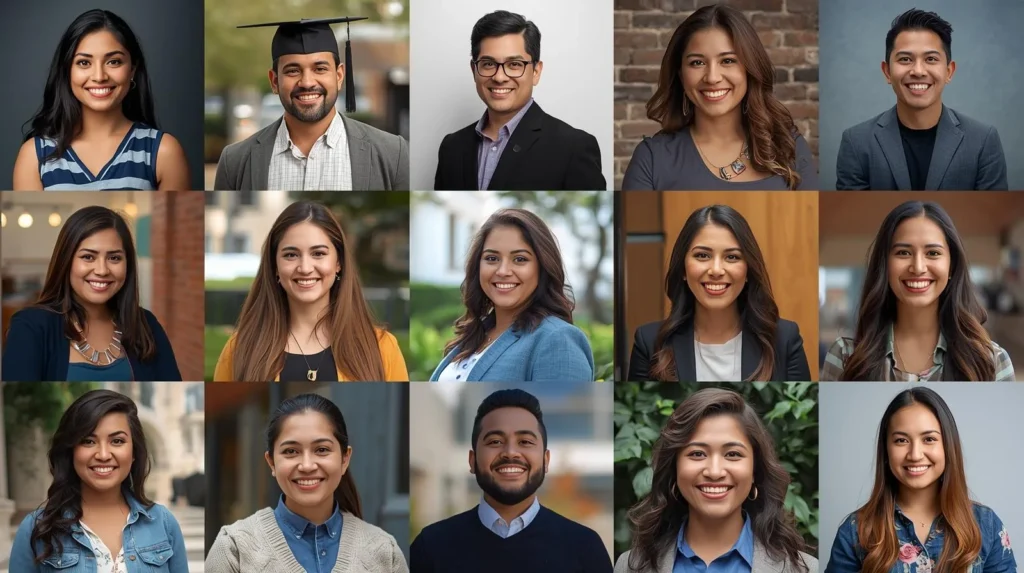
TESDA Scholarship FAQs: Everything Else You’re Wondering
General Questions
Q: Libre ba talaga ang TESDA scholarship?
A: Yes, completely free for approved scholarship programs like TWSP and STEP. You pay zero tuition, zero materials, zero assessment fees. Some programs even give daily allowances. However, you’re responsible for personal living expenses (food, accommodation, transportation beyond allowance).
Q: Can international students apply for TESDA scholarships?
A: Mostly no, with exceptions. TWSP, STEP, and PESFA are exclusively for Filipino citizens. However:
- Industry-partnered scholarships sometimes accept international students
- Some private institutions offer their own scholarships (not government-funded)
- International students can self-fund TESDA training (very affordable compared to Western countries)
Q: How competitive are TESDA scholarships?
A: Varies widely:
- High-demand courses (welding, caregiving): 60-80% approval rate if application complete and timely
- Specialized courses: 40-60% approval rate
- Peak application periods: More competitive
- Early applications: Better odds
Real talk: If you submit complete, accurate application early in enrollment cycle, your chances are good.
Q: Can I apply for multiple TESDA scholarships simultaneously?
A: Yes! Apply to TWSP, STEP, PESFA (if applicable), and industry-partnered programs simultaneously. Increases your approval probability. If multiple approvals, choose best fit.
Q: What happens if I fail the TESDA certification exam?
A: Scholarships typically cover first assessment attempt. If you receive “Not Yet Competent”:
- Get feedback on specific gaps
- Additional training/practice (may be self-funded)
- Retake assessment (pay assessment fee second time, usually ₱500-₱2,500)
- No limit on retake attempts
Most students pass on second attempt.
Q: Do I need to pay back the TESDA scholarship?
A: No repayment required. It’s a grant, not a loan. However, some scholarship agreements include:
- Completion obligation (must finish training)
- Assessment participation (must take certification exam)
- Job placement cooperation (work with TESDA placement services)
- No employment bond (unlike some company scholarships)
Q: Can I work while attending TESDA training?
A: Depends on program schedule:
- Full-time programs (8 AM-5 PM): Difficult to work simultaneously
- Part-time/evening programs: Designed for working students
- Weekend courses: Available for some programs
- Reality: Most full-time technical programs require full attention
Strategy: Save 3-6 months living expenses before starting, or work part-time weekends.
Application Process Questions
Q: How long does TESDA scholarship application take?
A: Timeline breakdown:
- Application submission: 1 day (if documents ready)
- Processing and review: 2-4 weeks
- Interview/assessment: 1-2 weeks (if required)
- Approval notification: 1 week
- Pre-training preparation: 2-4 weeks
- Total: 6-10 weeks from application to training start
Apply 2-3 months before desired start date.
Q: What if my application is denied?
A: Options:
- Ask for specific rejection reasons
- Address those issues
- Reapply next batch (often successful second time)
- Try different scholarship program
- Apply for different course with more availability
- Self-fund if possible
Don’t give up: Many successful scholars were initially rejected.
Q: Can I apply if I don’t have high school diploma?
A: Yes, with alternatives:
- ALS (Alternative Learning System) completion certificate accepted
- Some courses accept Grade 10 completion
- Mature applicants (30+) sometimes waived if they have relevant experience
- Check specific course requirements
Recommendation: Complete ALS first—free and opens more doors.
Q: Paano kung wala akong birth certificate?
A: Get PSA birth certificate:
- Visit nearest PSA Serbilis outlet
- Request authenticated birth certificate
- Present valid ID
- Pay ₱155 (counter) or ₱365 (delivery)
- Processing: 3-7 days
- Or online via PSA helpline
This is required—no way around it.
During Training Questions
Q: What happens if I can’t finish the training?
A: Depends on reason:
Valid reasons (illness, family emergency):
- Notify TESDA immediately
- Provide documentation
- May be allowed to resume next batch
- Scholarship may be retained
Voluntary withdrawal (just quitting):
- May be required to return toolkit/materials
- May be blacklisted from future scholarships
- Wasted slot that could’ve helped someone else
Attendance below 85%:
- Disqualified from certification
- Scholarship obligations violated
- Future applications affected
Q: Makakakuha ba ako ng trabaho agad after certification?
A: Timeline varies:
- Immediate to 1 month: 30-40% (especially welding, automotive, electrical)
- 1-3 months: 40-50% (most courses)
- 3-6 months: 80-85% (cumulative employment rate)
- Depends on: Field, location, job search effort, economic conditions
TESDA job placement services improve odds significantly.
Q: Can I take another TESDA course after finishing first one?
A: Absolutely! Many successful people stack certifications:
- Welding + Electrical = construction versatility
- Caregiving + First Aid = healthcare premium
- Computer Hardware + Programming = tech entrepreneurship
- Culinary + Baking + Bartending = food business
Each course requires separate scholarship application.
Financial Questions
Q: Magkano ba talaga ang gastos kahit may scholarship?
A: Realistic 6-month budget:
Covered by scholarship:
- Training, materials, assessment: ₱0
Your expenses:
- Accommodation: ₱15,000-₱30,000 (₱2,500-5,000/month)
- Food: ₱25,000-₱45,000 (₱4,000-7,500/month)
- Transportation: ₱9,000-₱18,000 (₱1,500-3,000/month)
- Miscellaneous: ₱6,000-₱12,000 (₱1,000-2,000/month)
- Emergency fund: ₱5,000-₱10,000
- Total: ₱60,000-₱115,000
Frugal strategy: ₱30,000-₱50,000 if living with relatives, cooking own meals, biking
Q: May allowance ba ang TESDA scholarship?
A: Depends on program and region:
- TWSP: ₱60-₱100 daily (some regions, not all)
- STEP: Usually includes allowance
- PESFA: No allowance (voucher only)
- Industry-partnered: Often includes allowance (₱200-₱400/day)
Check specific program details when applying.
Your TESDA Scholarship Action Plan: Start This Week
You’ve read everything. You understand the system. Now, here’s your concrete roadmap to actually securing a TESDA scholarship:
This Week (Days 1-7): Research and Decision
Day 1: Self-Assessment
- What skills genuinely interest you?
- What’s your financial situation?
- How much time can you commit?
- What’s your ultimate career goal?
- Which priority categories do you qualify for?
Day 2: Course Research
- Browse TESDA courses list
- Check employment rates
- Research salary ranges
- Consider entrepreneurship potential
- Identify top 3 course choices
Day 3: Scholarship Matching
- Review all TESDA scholarship programs
- Identify which ones you qualify for
- Understand coverage and benefits
- Plan to apply to multiple programs
Day 4: Initial Contact
- Call nearest TESDA office
- Get current batch schedules
- Ask about scholarship availability
- Request requirements checklist
- Get contact information for follow-up
Day 5: Financial Planning
- Calculate total costs (even with scholarship)
- Identify funding sources for living expenses
- Create savings plan if needed
- Explore family support options
- Build emergency fund target
Day 6: Requirements Audit
- List all needed documents
- Check what you already have
- Identify what needs acquiring
- Note processing times
- Create acquisition timeline
Day 7: Family/Support Discussion
- Share your plans with family
- Discuss responsibilities during training
- Get support commitments
- Address concerns
- Finalize decision to proceed
Next Two Weeks (Week 2-3): Document Gathering
Priority Actions:
- Request PSA birth certificate (takes longest—do first!)
- Get barangay certificates (indigency, good moral character)
- Take 2×2 ID photos (10 copies)
- Gather educational credentials
- Get medical certificate (if required for course)
- Photocopy everything (3 sets)
Organization:
- Buy document folder
- Label sections clearly
- Keep originals separate from copies
- Create checklist to track completion
Week 4: Application Preparation
Application Forms:
- Download from TESDA website or get at office
- Fill out completely in pen (or type)
- Double-check all information
- Have someone proofread
- Make copies before submission
Personal Statement:
- Write compelling explanation of need
- Articulate career goals
- Show commitment and motivation
- Keep it genuine and specific
- Proofread carefully
Final Document Check:
- Verify completeness against checklist
- Organize in order
- Place in professional folder
- Prepare original + 3 photocopy sets
- Bring extras just in case
Week 5: Submission
Submission Day Preparation:
- Dress professionally (business casual minimum)
- Arrive during non-peak hours (10-11 AM or 2-3 PM)
- Bring all documents organized
- Prepare questions to ask
- Bring pen and notebook
During Submission:
- Be polite and patient
- Ask for acknowledgment receipt
- Get reference number
- Ask about timeline
- Get contact info for follow-up
- Thank staff sincerely
After Submission:
- Keep copies of everything
- Note submission date
- Set follow-up reminders
- Stay positive
Week 6-8: Follow-Up and Waiting
Week 6:
- Courtesy call to check if documents received
- Confirm completeness
- Ask if anything additional needed
Week 7:
- Check processing status
- Be polite but persistent
- Note any updates
Week 8:
- Follow up on approval status
- Prepare for interview if required
- Start pre-training preparations
If Approved: Pre-Training Phase
Immediately:
- Celebrate! (You did it!)
- Notify family and supporters
- Read scholarship agreement carefully
- Sign and return documents
2-4 Weeks Before Training:
- Attend mandatory orientation
- Meet coordinators and instructors
- Tour facilities
- Connect with fellow scholars
- Finalize accommodation
- Plan transportation
- Buy any required items not provided
- Clear schedule completely
If Waitlisted or Denied
Don’t Panic—Options Exist:
If Waitlisted:
- Stay in contact with TESDA office
- Many waitlisted applicants get approved
- Dropouts and no-shows create openings
- Check status weekly
- Keep documents updated
- Be ready to start on short notice
If Denied:
- Ask for specific reasons
- Address those issues directly
- Reapply next batch (2-3 months typically)
- Try different scholarship program
- Apply for different course with more availability
- Different TESDA office might have openings
- Industry-partnered scholarship as alternative
- Self-fund if possible (still very affordable)
Remember: Many successful scholars were initially denied. Persistence wins.
Final Thoughts: Your Scholarship Journey Starts Now
After 3,000+ words about TESDA scholarship programs, let me cut through everything and give you the essential truth:
These scholarships are real. They’re accessible. They change lives.
I’ve watched it happen hundreds of times. Single mothers becoming Canadian nurses. Tricycle drivers becoming overseas welders. Out-of-school youth building six-figure businesses. Career changers finding new purpose at 40+.
The pattern is always the same:
- They learned about TESDA scholarships
- They took action despite doubts
- They completed the application
- They showed up consistently
- They earned certification
- They found employment or started businesses
- They transformed their economic trajectory
What separated them from people who stayed stuck? Action.
Not intelligence. Not connections. Not luck. Just the willingness to fill out that application form and show up.
The Hard Truth About Opportunity
TESDA scholarship programs represent something rare in the Philippines: genuine meritocracy.
Your last name doesn’t matter. Your family’s wealth doesn’t determine your fate. Who you know won’t help you weld better or care for patients more compassionately.
What matters is: Can you show up? Can you learn? Can you demonstrate competence?
If yes, the scholarships are available. The training is waiting. The certification is achievable. The employment exists.
But here’s what I need you to understand:
This opportunity won’t chase you. TESDA won’t knock on your door begging you to accept free training. The scholarship won’t apply for itself.
You have to take the first step.
And that step isn’t even difficult:
- Pick up your phone
- Call your nearest TESDA office
- Ask about scholarship applications
- Request the requirements
- Start gathering documents
That’s it. That’s the first step that separates dreamers from achievers.
The Investment That Pays Forever
Think about this: A TESDA scholarship represents approximately ₱30,000-₱50,000 in training value.
But the actual value is: ₱2-5 million in increased lifetime earnings.
Let that sink in. ₱30,000 training creates ₱2,000,000+ additional lifetime income. That’s a 6,600% return on investment—except you’re not even investing money, just time and effort.
Show me another investment with those returns. There isn’t one.
What Success Actually Looks Like
Success doesn’t mean:
- Becoming a millionaire overnight
- Never struggling again
- Perfect, smooth journey
- Guaranteed outcomes
Success means:
- Earning ₱20,000-₱35,000 monthly instead of ₱10,000-₱15,000
- Having employable skills in demand
- Knowing you can provide for family
- Owning certified competence
- Having pathway to better opportunities
- Breaking poverty cycle for next generation
That’s realistic. That’s achievable. That’s what TESDA scholarships actually deliver.
Your Moment of Decision
Right now, you’re at a crossroads.
Path 1: You close this article, tell yourself “someday,” and nothing changes.
Six months from now, you’re in the same situation. A year from now, you’re wishing you’d applied. Five years from now, you’re wondering what could have been.
Path 2: You take action this week.
You call TESDA. You get the requirements. You start the application. You commit to the process.
Six months from now, you’re certified. A year from now, you’re employed with real skills. Five years from now, you’re financially stable, maybe running your own business, definitely providing better for family.
Same starting point. Two different futures.
Which path do you choose?
Your Assignment (If You’re Serious)
Don’t just read this and move on. Take action TODAY:
Before you do anything else:
- Google: “TESDA provincial office [your location]”
- Save the phone number in your contacts
- Set a phone reminder for tomorrow 10 AM: “Call TESDA”
- Screenshot your top 3 course choices from this article
- Share this article with one person who needs it
By end of this week:
- Call TESDA office (or visit in person)
- Get enrollment schedule
- Request scholarship requirements
- Download/collect application forms
By end of this month:
- Gather all required documents
- Complete application forms
- Submit scholarship application
By end of next quarter:
- Start training
By this time next year:
- Be certified and employed
That’s the timeline. That’s what’s possible.
A Personal Note
If this guide helped you in any way, I have one request:
When you succeed—and you will if you put in the work—pay it forward.
Help someone else discover TESDA scholarships. Share your story. Mentor a struggling student. Donate old tools to training centers. Hire TESDA graduates in your business.
That’s how we lift the Philippines together. One skilled worker at a time. One scholarship at a time. One transformed life at a time.
The Bottom Line
TESDA scholarship programs aren’t perfect. Processing can be slow. Some offices are more efficient than others. Not everyone gets approved first try.
But they’re real, they’re substantial, and they’re accessible.
The question isn’t whether the opportunity exists. It does.
The question is: Will you seize it?
Take Action Now
Don’t wait for perfect timing. It doesn’t exist.
Don’t wait until you have more money. Scholarships cover training.
Don’t wait until you feel “ready.” Nobody feels ready—they just start.
Here’s what to do RIGHT NOW:
- Save this guide (bookmark it, screenshot key sections)
- Get TESDA contact info for your area
- Make the call THIS WEEK
- Start the application process
- Commit to following through
Six months from now, you’ll either be:
- Certified with new skills and better prospects, OR
- Still thinking about applying “someday”
Your choice. Your future. Your move.
Make. It. Count.
Quick Reference: Essential TESDA Scholarship Information
Top 5 Scholarship Programs
- TWSP (Training for Work) – General, largest allocation
- STEP (Special Training) – Disadvantaged sectors
- PESFA – Private school vouchers
- OFW Programs – Overseas workers and dependents
- Industry-Partnered – Guaranteed employment
Documents You’ll Need
✓ PSA Birth Certificate
✓ Valid Government ID
✓ 2×2 Photos (10 copies)
✓ Educational credentials
✓ Barangay certificates
✓ Application form
Best Application Times
- January-March: Highest approval rates
- June-August: Second best window
- Apply 2-3 months before desired start
Top Courses (High Approval + Employment)
- Welding NC II
- Caregiving NC II
- Automotive Servicing NC II
- Computer Systems Servicing NC II
- Electrical Installation NC II
Contact Information
- TESDA Website: tesda.gov.ph
- TESDA Hotline: Check website for current number
- Provincial Offices: Search “[Your Province] TESDA office”
Estimated Costs (Even with Full Scholarship)
- 6 months training: ₱50,000-₱70,000 for living expenses
- Frugal budget: ₱25,000-₱35,000 possible
- Scholarship covers: Training, materials, assessment, toolkit
Employment Timeline
- Training: 3-6 months
- Certification: 1-2 months
- Job search: 1-3 months
- Total: 5-11 months to employment
Success Rate
- Complete, timely applications: 60-80% approval
- Employment within 6 months: 70-85%
- Income increase vs. non-certified: 50-100%
Remember: Every successful TESDA scholar started exactly where you are now—reading about scholarships and wondering if they could actually do it.
They did it. You can too.
Start this week. Not next month. Not “when things settle down.” This week.
Your future self will thank you.
Kaya mo yan! (You can do this!)

Disclaimer: This guide provides general information about TESDA scholarship programs based on publicly available information and common practices. Specific requirements, deadlines, and procedures may vary by region and program. Always verify current information directly with your local TESDA office. Scholarship approval is not guaranteed and depends on individual circumstances, funding availability, and program capacity.
